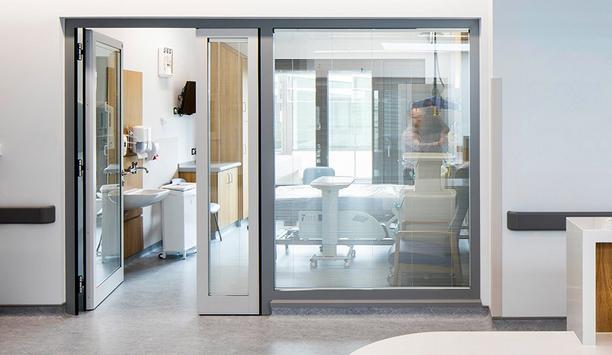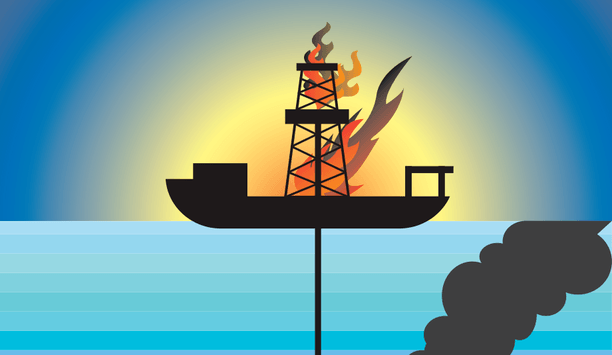Fire Protection News & Trends
Since the Grenfell tower tragedy in 2017, residential high-rise fire safety has become a top priority for tower block building managers. If a high-rise building is found to contain combustible cladding, then the standard ‘stay put’ policy is no longer considered safe, and instead a temporary ‘simultaneous evacuation’ strategy must be put in place until the cladding issue is resolved. Currently a Waking Watch protocol is the preferred option for ensuring resident’s...
From August to November, areas of Western North America brace for fire seasons that grow increasingly more destructive. 2020, in particular, has brought the United States some of the most destructive wildfires seen throughout US history. In California alone, over 4 million acres have been burned in over 9 thousand incidents, claiming 31 lives and over 10 thousand structures. When looking at the totality of fire damage in all of Western North America, this number nearly doubles, with over 8 mill...
In any business, fire can cause significant damage and substantial loss of revenue, assets, or productivity due to a period of downtime. However, fires can be prevented through continuous temperature monitoring, as it can detect hot spots or rising temperatures that may lead to a fire. Temperature monitoring, in combination with effective suppression systems, can largely reduce fire risk and safeguard your teams, assets and the environment. How thermal imaging supports fire detection and suppr...
There are many daily risks faced by buildings and their managers, with electrical fires being one of the most common and dangerous. Commercial fires impact occupant health, property and the business itself – with 25% of businesses who suffer a fire never reopening. Given the often-unpredictable nature of electrical fires, businesses must invest in the latest technologies to prevent irreparable damage. It is the responsibility of the consultant engineer to show le...
Due to the nature of their design and uses, tunnels have particularly unique fire risks, and any fire can spread quickly, risking damage to assets or injuries to teams. Mining, cable and communication tunnels are subject to significantly high risks, as they utilize heavy-duty machinery, flammable materials and cables, which are all subject to the production of excess heat. Here we discuss the prevalent fire risks in tunnels and explain how businesses operating within them can assess and mitigat...
Only approved cabling should be used in critical signal and control equipment in the event of a real fire - and the announcement of a revized version of the Code of Practice covering these areas of performance clarifies the detail. The equipment served by these cables - including smoke and heat extraction systems - assists fire services in the case of firefighting and a safe evacuation in the case of life safety. fire performance cables As the only supplier in the UK with independent approval...
In the years since the Grenfell Tower tragedy of 2017, all eyes have been on fire regulations, which have come under increased scrutiny – and it’s easy to see why. Even after the disaster, businesses across the UK are still lagging behind on mandatory fire safety regulations. It seems that regulatory change has not brought about the desired outcome at most organizations. With all 53 recommendations of the Hackitt Review set to come into effect this year, many a...
Our world is filled with ‘extrusions’. They are small and not-so-small cross-sections that operate as seals, bridging the complex components of machines and moving parts together and helping them to keep them in working order. There are many different types of extrusions, and the diversity of their functionality often puts them at risk of — and makes them important in preventing — situations that can lead to electrical fires. Extrusions are also often made out of d...
According to the 2009 edition of the Emergency Care Research Institute Health Devices Guide, operating room fires rank third on the top 10 technology hazards. ECRI estimates that between 550 to 650 fires occur in operating rooms in the United States. The most common sites where fires were the head, face, neck and upper chest (Hart, MD et al. 2011) which means that patients are disproportionately at risk compared to patients exposed to fire risks in other parts of a hospital. Fire hazards in Op...
The majority of fires within the UK take place within the home; with that in mind, it is highly advisable to regularly update and practice exit strategies in the event of an emergency. In order to raise awareness of fire safety in our communities, it’s important to be clear on what the most common causes of household fires are. Electrical appliances Electrical items are a major culprit of home fires. This can easily be avoided by ensuring a PAT test is carried out each year. It’s...
During these challenging times, it is more important than ever to protect the supply chain of food, including supermarkets and convenience stores in cities around the world. On average 3,740 fires occur in food and groceries stores in the US annually, including supermarkets and convenience stores, according to a report published by the NFPA (National Fire Protection Association). Structure fires in mercantile properties were responsible for the loss of 12 lives and more than $600 million indir...
The long-awaited announcement by the government to ensure sprinkler systems are mandatory in all new high-rise blocks over 11 meters tall has been welcomed by all. However, what happens next - and how quickly - is crucial for all concerned. The UK government recently announced an amendment to the statutory guidance to building safety regulations, known as Approved Document B, reducing the requirement for sprinkler systems from the current 30 meters to 11 meters in high-rise buildings. New laws...
With many businesses and facilities re-opening sites following the Coronavirus lockdown, fire safety may not seem high on the list to other worries and responsibilities. But here, Mandy Bowden, Fire Business Development Manager at Comelit Group UK, led by fire industry bodies, demonstrates why it must be a priority, ensuring installation of systems is guided by best practice in accordance with the development, and fire safety measures are maintained and regularly tested to ensure compliance. Fi...
As we continue to settle into our new norm brought on by COVID-19, it’s become hard to imagine what the world will look like on the other side. If ever there were a clearer definition of a paradigm shift in the making, it’s this time. Yet, it’s not the only paradigm that has shifted in the last few years. As the climate has continued to change, helping to create more fuel for wildfires, we’re experiencing compounding changes at a global scale. And, the light at the...
2020 introduced a variety of unique challenges for many industries around the world. Not surprisingly, the fire detection industry was not immune to all of those challenges. However, as much of the global community defined our manufacturing and installing peers as “essential” or “critical” it required us, as an industry, to adapt so we could continue to service our customers with our products and services. Many regions around the world are experiencing significant deman...
The fire industry has made it absolutely clear, led by authorized bodies including the BAFE Fire Safety Register, that the current pandemic does not remove the need to comply with any fire safety requirements under the Building Regulations. As we now look beyond the lockdown period, John Allam, Operations Director at Amthal Fire and Security reviews the raft of new proposals demonstrating the Government and industry’s commitment to compliant fire safety and new immediate demands placed on...
New government legislation due to come into force in the United Kingdom on July 1st will require electrical installations in privately rented properties to be tested and inspected at least once every 5 years. The Electrical Safety Standards in the Private Rented Sector Regulations (2020) will require landlords to enlist qualified electricians to complete inspections and provide certification to tenants – or face fines of up to £30,000. While the risk of fire can never be entire...
There have been challenges with completing fire safety maintenance and installation projects during the current Covid-19 crisis, most notably as a result of the difficulties for installers in safely accessing sites. Many construction projects halted for lockdown and this resulted in approximately 50% of the British installers we work with having to furlough staff. The challenges, however, are not just restricted to the UK. With Kentec panels sold in more than 90 countries across the world, we ha...
Over the last decade, fire protection has been transformed by the rise of addressable, IP-based devices embedded in networked fire alarm system infrastructure. The scalability and modular architecture of digital fire alarm systems has unlocked a new level of fire safety, for instance by pinpointing the exact location of a triggered smoke detector in an alarm, or by interfacing with public address systems for phased building evacuations. For system integrators, installation and maintenance of ala...
Protecting against fire and security risks is an essential aspect of life for people and across all sectors. However, there is an increasing expectation and demand on fire and security providers, in areas such as education. The securitisation of our world paired with the rapid speed of communication and news updates means that young people especially have the potential to be more aware of potential dangers and threats to their own safety and the safety of those around them. Education institutio...
The effective provision and management of on-site fire safety, prevention, response and protection is a core responsibility of operators of hazardous high-risk critical infrastructure and industrial manufacturing facilities around the world. Such services are typically found at airports, refineries and petrochemical plants, power stations and nuclear facilities, mines, manufacturing sites and port facilities. Driven by legislative requirements and international fire safety standards, many organ...
Those responsible for the specification of products which go into new modern buildings have been asking for safe, approved cabling, which play a critical part in electrical supply systems. The number of fires in high-rise buildings in Europe and the Middle East have brought the issue of quality of products for fire performance circuits into sharp focus, not least the Grenfell disaster. Meanwhile, new buildings become increasingly complex, with the use of new materials and the designs of many r...
Water is key to any firefighting operation. Being able to secure an adequate water supply is critical a critical skill for all fire departments. One of the most challenging scenarios to secure a water supply in is when there is no municipal water supply, or it is lacking in volume and flow. When fires occur in these areas, the only alternative is to shuttle water from the nearest municipal supply or a static body of water. To get the highest flow possible, departments must train on shuttle set...
Did you know an estimated 30% of smoke alarms in the UK are inoperable due to missing, flat or disconnected batteries? For a property to comply with The Regulatory Reform (Fire Safety) Order 2005, it is vitally important that all fire safety equipment is kept in perfect working order at all times. This involves checking that the fire safety equipment is accessible, well maintained and hasn’t been tampered with. There are many ways you can take care of your fire safety equipment, to ensur...
I gave a lot of thought to identifying the biggest challenge facing the American fire service in 2019. Many things came to mind: funding; fire prevention - if every building was sprinklered and all had working smoke alarms, it would solve a lot of other problems; political influences; initial, regular and ongoing training, and a bunch more. But the one constant that kept popping up is the people issue. Staffing. This obviously isn’t the first time you’ve heard that. Normally, when w...
The original fire suppression agent has always been, of course, water. In the age of sail, it was ideal. Not so with the advent of the combustion engine, however. When applied to burning petroleum, the fire spreads. It also simply destroys electronics. Carbon dioxide (CO2) and Halon derivatives were the first widely used commercial fire suppression solutions, gaining popularity in the 1950s and '60s. Unlike water, they were highly effective, electrically non-conductive and didn't leave any resi...
Products for electrical systems that are installed into modern, complex buildings have to be fit-for-purpose for today’s challenging demands. With the background of numerous incidents still being felt by the fire performance industry, how is it to set the benchmarks for the future to make sure there is never another Lakanal House or another Grenfell? The long-term answer is for clearer guidance and legislation, if necessary, to enable the whole supply chain to make decisions which are com...
The continuity of power in the event of a real fire has never been more important as modern buildings become more complex and the need for the highest quality of products comes under the spotlight. With power for lighting and fire alarms, the fire and rescue services can use the intelligence gathered to evacuate people quickly, confident that they have found all the people in the building. Without power, they are literally scrambling in the dark without good information upon which to make thei...
While whole room protection – sprinklers or gas systems – is a common choice, there is an argument for thinking smaller; taking fire detection and suppression down to the equipment, enclosures and even the components where a fire is most likely to start. Traditional Fire Suppression Methods A traditional water-based sprinkler system is the most common form of fire protection found in commercial and industrial buildings. They offer reasonable cost, large area protection for entire f...
The era of “smart buildings” is here, bringing new opportunities for significant gains in efficiency, safety and environmental protection. In an interview, Rodger Reiswig, director of industry relations at Johnson Controls Global Fire Protection Products, offers his insights into the impact of smart buildings on fire detection and what it means for organisations planning new facilities. Q: How do you define smart buildings? The term “smart buildings” means different thi...
Browse fire protection news
The New Future For Fire Agencies
DownloadThe Eight Key Trends in Fire Detection in 2023
DownloadA Digital Platform to Improve Fire Safety Compliance and Inspections
DownloadOvercoming the Challenges of Fire Safety in the Paper Industry
DownloadCarbon Monoxide: Creeping Killer Caught In The Act
Download

































